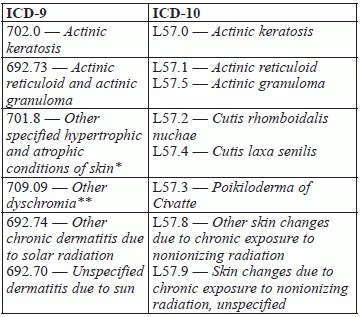Don't Get Zapped When Radiation-Related Disorders Codes Change
In 2015, look for debut of the L57.- codes .
In a previous issue of Dermatology Coding Alert, we looked at how ICD-10 would change diagnosis coding for sunburn and other solar radiation-related skin conditions. This time, we’ll examine how your coding will change effective Oct. 1, 2015, for skin disorders caused by other sources of radiation.
ICD-10 contains a category of diagnoses relating to “Skin changes due to chronic exposure to nonionizing radiation,” which will map to ICD-9 codes that are now scattered among different sections. The new ICD-10 category, L57.-, consists of:
*ICD-9 code 701.8 maps to two ICD-10 codes in the L57.- category, but it will also map to other ICD-10 codes in other categories:
**ICD-9 code 709.09 will also map to the codes in the ICD-10 “Other disorders of pigmentation” series (L81.-).
Learn more: For more information on the ICD-10 conversion, as well as specific ICD-9 to ICD-10 code bridges, visit https://www.aapc.com/codes/. 

